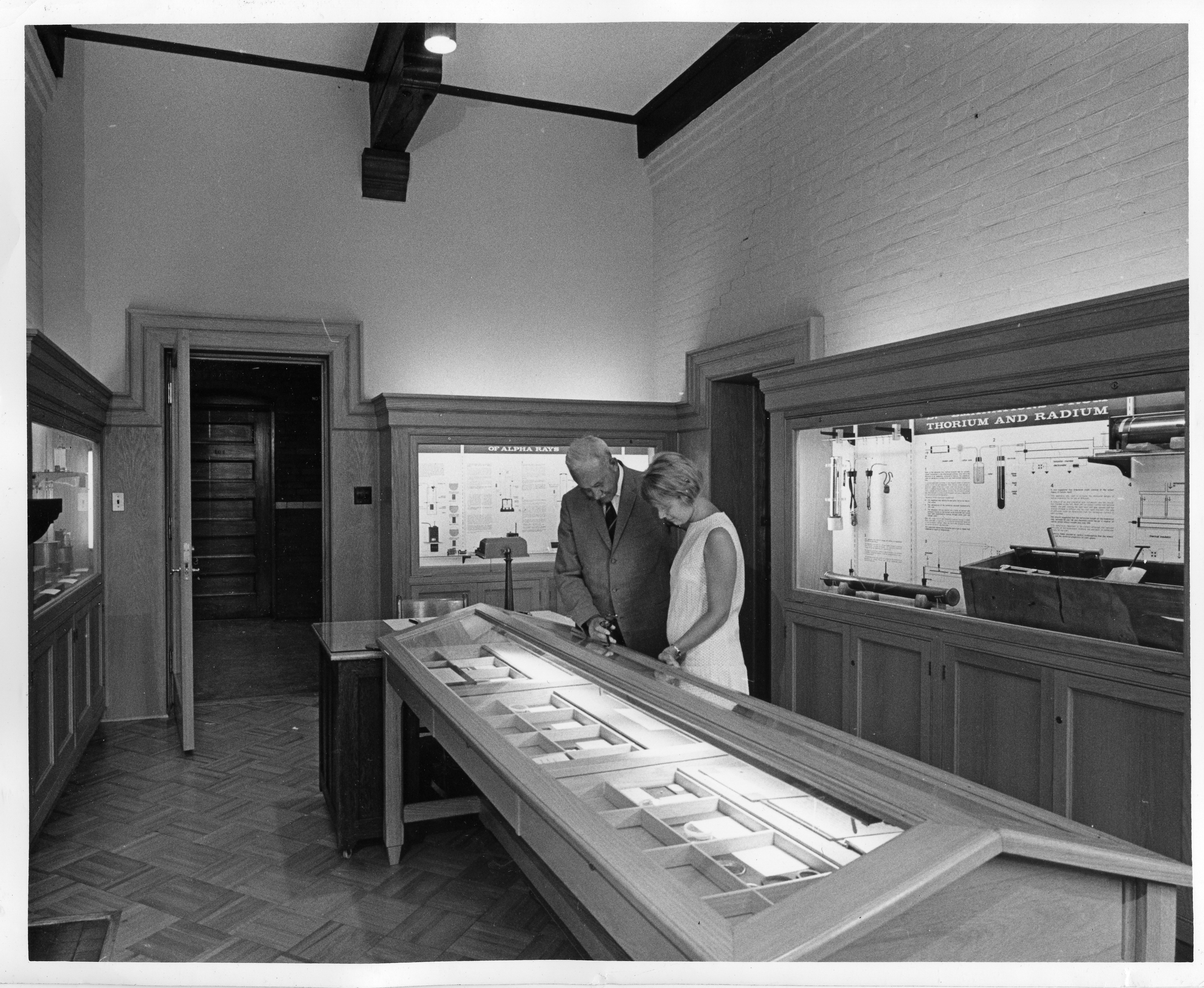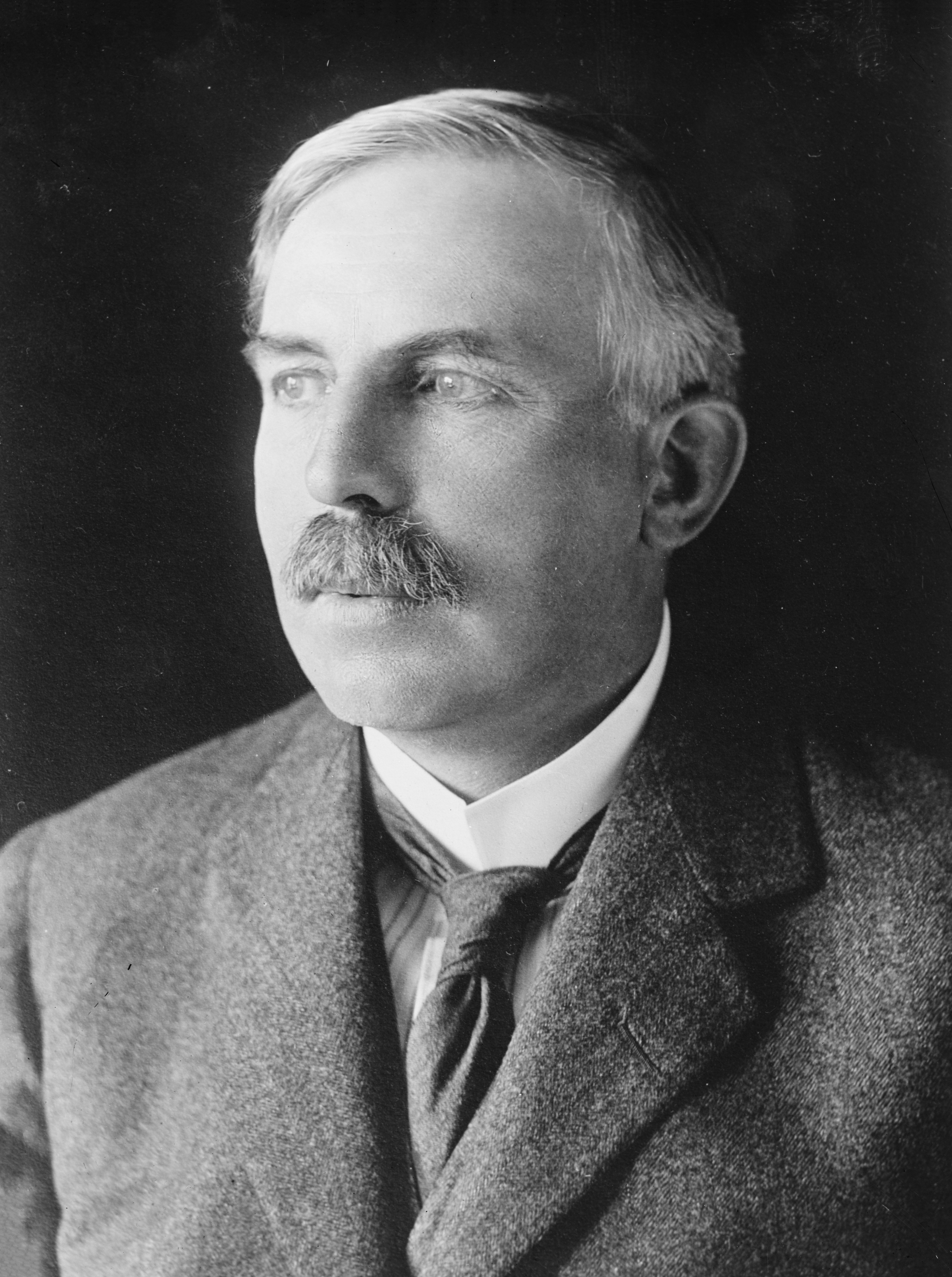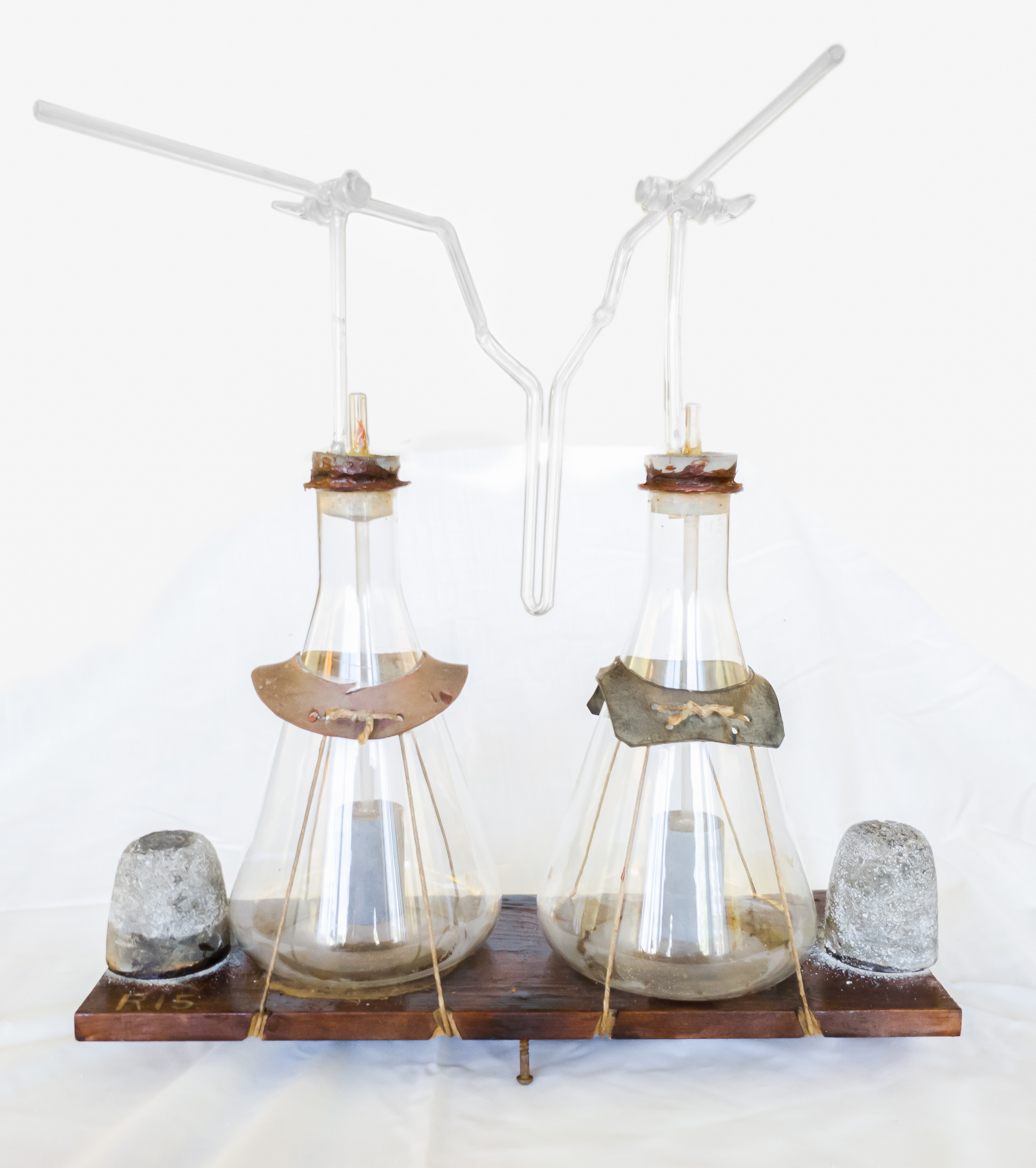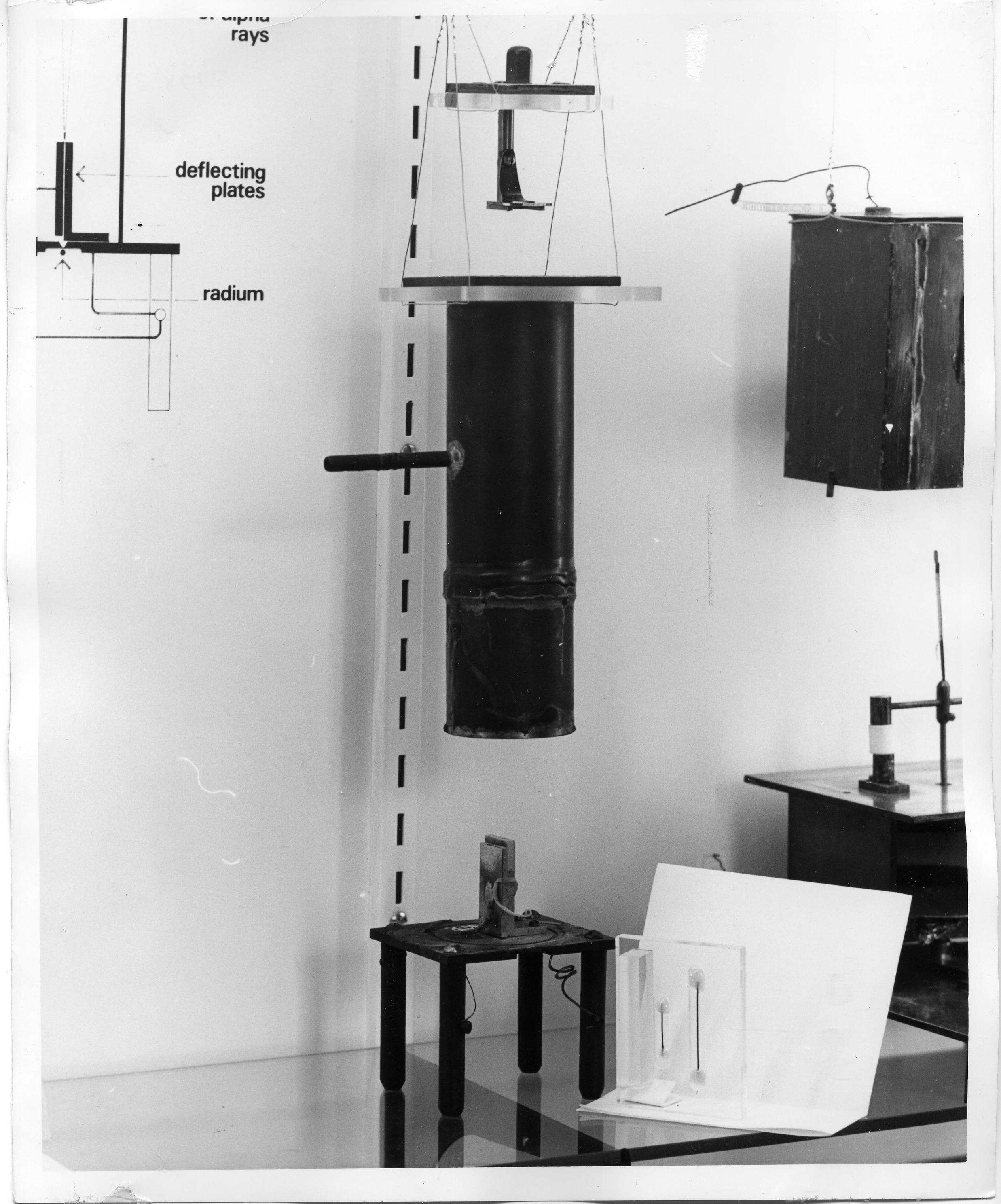
Rutherford chose to take up the scholarship at the Cavendish Laboratory in Cambridge, under Professor J. J. Thomson, affectionately known as "JJ". At first Rutherford continued his research on magnetism, but in 1896, following the discovery of X-rays by Wilhelm Conrad Roentgen on November 8, 1895, JJ invited Rutherford to participate in research on the induction of ionization in gases by the Roentgen rays. This was later extended to include ionization induced by the rays emitted by radioactive substances, such as uranium and its compounds, as discovered by Henri Becquerel in March 1896.
In 1898 Rutherford reversed his priority and began using ionization as a tool for studying radioactivity. Almost immediately he discovered the heterogeneous nature of the "Becquerel rays"; he called the non-penetrating component α-rays and the more penetrating, β-rays. (The γ-rays were discovered in 1900 by Paul Villard in Paris.)
The move to Montreal
In the autumn of 1898 Rutherford was appointed Macdonald Professor of Experimental Physics at McGill University. At this time the Department of Physics (strictly speaking, the Physics Laboratory) comprised two professors, and a small number of junior instructors and research students. There was a fairly heavy teaching load, mainly to students of engineering, medicine, chemistry and other disciplines rather than physics per se. The vacancy arose from the resignation of Professor Hugh Callendar, who decided to return to the UK. The Chairman of the Department, Professor John Cox, went over to Cambridge to seek a replacement, and JJ recommended Rutherford.
At first Rutherford was reluctant to accept the offer, since he was already established in one of the main centres of the scientific world, whereas Montreal was decidedly on the periphery. However, he soon realized the potential advantages of the move: first of all, he was being offered a Full Professorship, at the young age of 26 (he was actually 27 when he arrived in Montreal), a promotion unlikely to occur in England for several years. Secondly, the salary of $2,500 p.a. was excellent, and Rutherford needed the money since he was engaged to be married. (His fiancée, Mary Newton, was the daughter of his landlady at Christchurch in New Zealand. They were married in N.Z. in the summer of 1900, and Rutherford brought his bride back to Montreal.) Thirdly, the Physics Building at McGill, donated by the tobacco millionaire William Macdonald, was new (it was opened in 1893) and was reputed to be one of the finest, and best equipped, science buildings in the world. Finally, the position offered was essentially a research post, which was what Rutherford wanted. (Most of the teaching was undertaken by Cox, who was an excellent teacher but an indifferent researcher.) It may be added that Rutherford was a young man of great self-confidence and convinced himself that he could overcome the disadvantage of working on the other side of the Atlantic, although it is almost certain that he never intended to remain there as long as nine years.
Rutherford at McGill
Rutherford's research at McGill covered every aspect of radioactivity, including the nature and properties of the 'emanation' (radon) produced by radium and thorium, the heating and ionization properties of the radiations, the charge and nature of the a, g and rays, excited radioactivity, and elucidation of the three natural radioactive series (uranium-radium, actinium and thorium). During his nine years at McGill, Rutherford published 69 papers, either alone or with a second author. The latter group included graduate students, demonstrators and professors at McGill and (after 1903) graduate students and post-doctoral scientists from several countries outside Canada. These collaborators published some 30 independent papers on various aspects of radioactivity, mostly on topics suggested by Rutherford and under his general guidance.
The most significant collaboration was between Rutherford and Frederick Soddy, a young English chemist who was appointed Demonstrator in Chemistry at McGill in 1900. The collaboration between Rutherford and Soddy lasted only 18 months, from October 1901 to March 1903, but resulted in nine important papers, including "The cause and nature of radioactivity," published in two parts in 1902.
Other than Soddy, the most important of Rutherford's collaborators were Arthur Stewart Eve, an English physicist; Howard Barnes, a young Montreal physicist; Howard Bronson, an American physicist from Yale; Tadeusz Godlewski, a physical-chemist from Cracow (Poland); and Otto Hahn and Max Levin, both physical chemists from Germany.
Nobel Prize
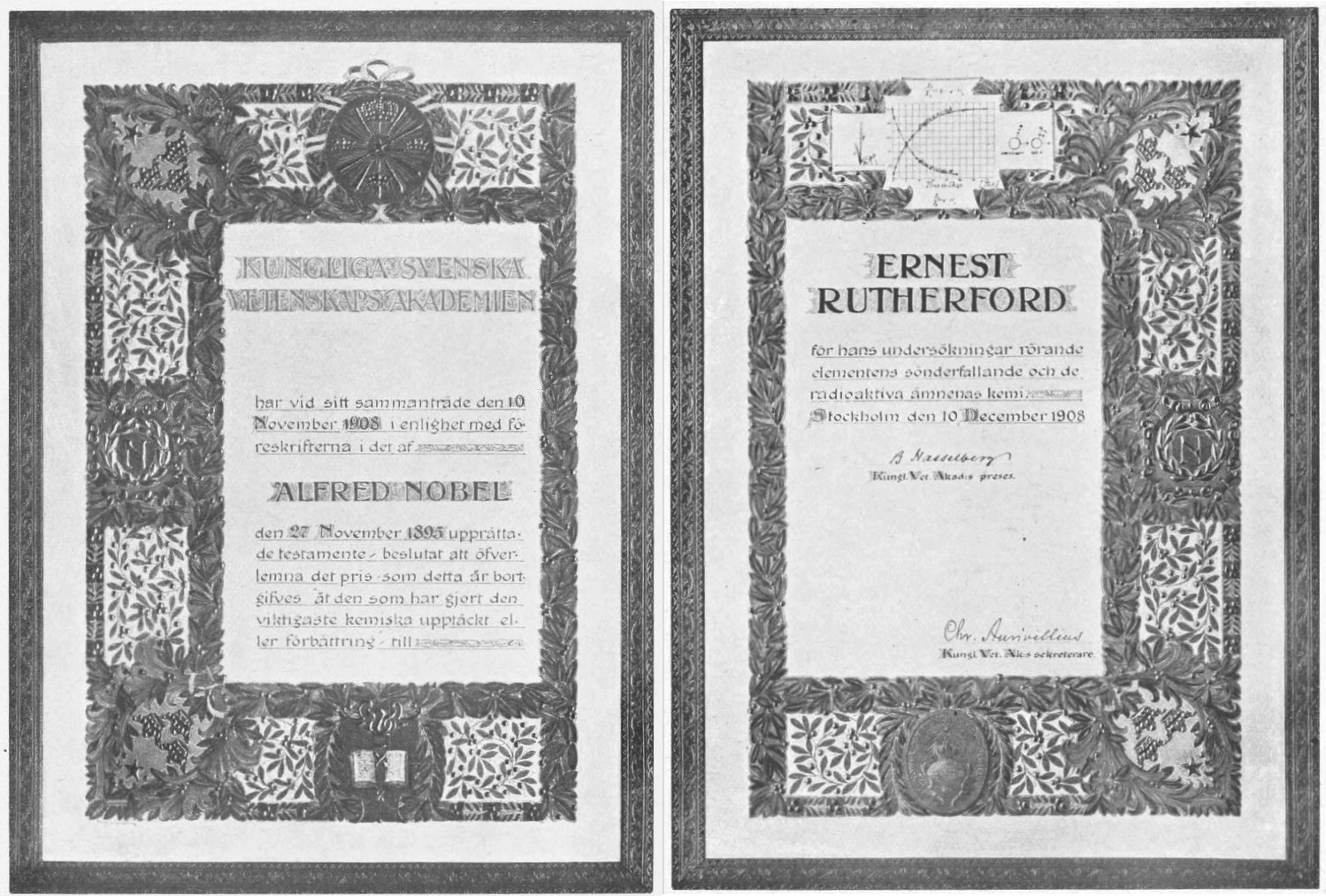
Rutherford moved from Montreal to Manchester in the summer of 1907, and the following year he was awarded the Nobel Prize in Chemistry for "researches on the disintegration of the elements and the chemistry of radioactive matter." Although he was no longer in Montreal, most of the work referred to in this citation had been carried out during his 9-year tenure at McGill. Rutherford delivered his Nobel Lecture in Stockhom on December 11, 1908, under the title, "The Chemical Nature of the a-Particle from Radioactive Substances."


